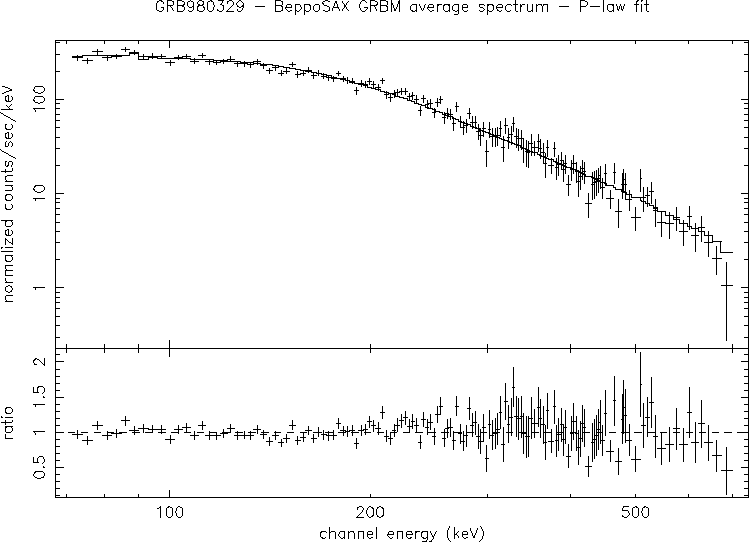 |
The analysis of the 240 channels energy spectra follows the standard steps of
data reduction, background subtraction, analysis with specifically developed and/or standard software.
For the background subtraction, the interpolation is performed by fitting
the trend of the counts in groups of channels from 1-2 packets before and after the packet containing the event spectrum. Because PHA spectra are accumulated
over 128 s, the GRB event is usually contained in 1 GRBM packet, but
it may happen, as for GRB990123 and SGR1900+14 (see chapter 5), that the duration of the event covers more than one packet, , thus allowing 240 channels time resolved spectral analysis of the event. Possible
changes in detectors gain between before and after the event are checked and
spectra of the background in the same portion of previous orbits are analyzed and
compared.
In figures 4.9 we show the average counts and photon spectrum of GRB980329, another very bright event ([in 't Zand 1998]).
The fit is a single power-law. Also this burst is part of the WFC detected GRB
sample and thus its position is known with very good accuracy.